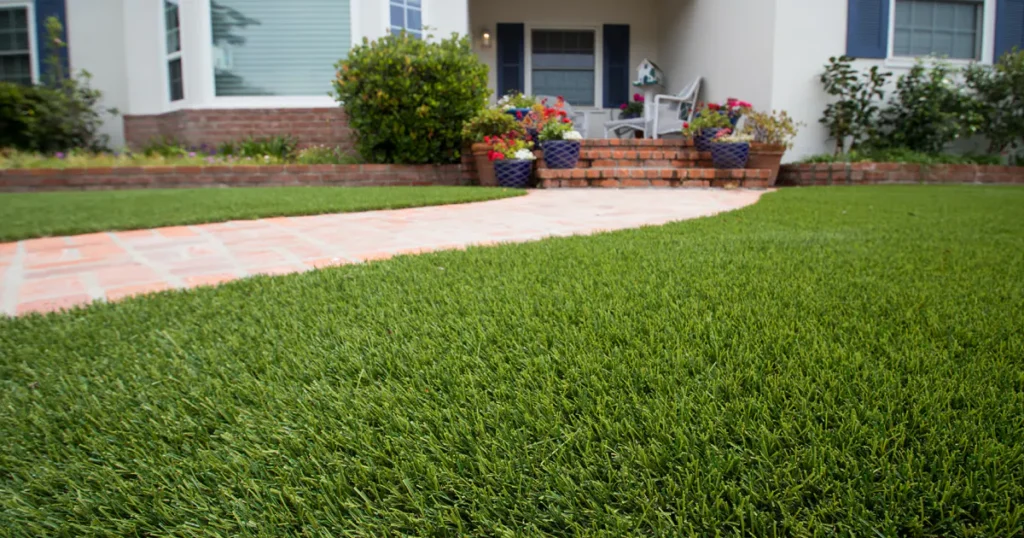As environmental concerns become increasingly prominent, the artificial grass industry has made significant strides toward adopting sustainable practices. While artificial grass offers numerous benefits, including low maintenance and water conservation, implementing eco-friendly practices during installation can further enhance its sustainability. Here’s a look at some key sustainable practices in artificial grass installation.
1. Use of Recycled Materials
One of the most impactful sustainable practices is the use of recycled materials in Artificial grass installers products. Modern synthetic turf often incorporates:
- Recycled Fibers: Many artificial grass products are made from recycled materials such as post-consumer plastic bottles or discarded tires. This reduces the demand for virgin resources and helps divert waste from landfills.
- Recycled Backing: The backing material of artificial grass, which provides structure and support, can also be made from recycled plastics. This approach minimizes environmental impact and supports a circular economy.
2. Low-Impact Installation Methods
The installation process itself can be optimized for sustainability through various low-impact methods:
- Efficient Site Preparation: Proper site preparation minimizes soil disturbance and reduces the need for heavy machinery. Techniques such as hand excavation and careful grading help preserve the natural landscape and reduce the carbon footprint of the installation process.
- Reduced Use of Chemical Treatments: Avoiding or minimizing the use of chemical treatments, such as herbicides or pesticides, during site preparation contributes to a healthier environment. Instead, natural methods of weed control and soil preparation can be employed.
3. Water Conservation
Artificial grass is inherently water-efficient, but additional practices can enhance water conservation:
- Effective Drainage Systems: Installing advanced drainage systems ensures that rainwater is efficiently managed and prevents water pooling. Proper drainage helps maintain the turf’s performance and reduces the risk of water waste.
- Rainwater Harvesting: Incorporating rainwater harvesting systems can further enhance sustainability. Collecting and using rainwater for irrigation or other purposes reduces reliance on municipal water supplies and supports overall water conservation efforts.
4. Energy-Efficient Production
The production of artificial grass can be made more sustainable through energy-efficient practices:
- Renewable Energy Sources: Manufacturers can use renewable energy sources, such as solar or wind power, in the production process. This reduces the carbon footprint associated with manufacturing artificial grass and supports cleaner energy practices.
- Optimized Manufacturing Processes: Innovations in manufacturing technology, such as reduced energy consumption and waste minimization, contribute to more sustainable production. Advances in production techniques also help improve the durability and lifespan of the turf.
5. End-of-Life Considerations
Addressing the end-of-life phase of artificial grass is crucial for sustainability:
- Recycling Programs: Many manufacturers and suppliers offer recycling programs for artificial grass. This allows old or worn-out turf to be properly processed and repurposed, reducing landfill waste and supporting a circular economy.
- Durability and Longevity: Choosing high-quality, durable artificial grass can extend its lifespan and reduce the need for frequent replacements. Longer-lasting products contribute to overall sustainability by minimizing the frequency of replacement and associated waste.
6. Educating Consumers
Educating consumers about sustainable practices and the environmental benefits of artificial grass can enhance the overall impact:
- Awareness Campaigns: Informing consumers about the sustainable aspects of artificial grass, such as water conservation and reduced maintenance, helps promote responsible use and supports broader environmental goals.
- Best Practices Guidance: Providing guidance on sustainable installation and maintenance practices empowers homeowners and property managers to make eco-friendly choices and contribute to a greener environment.
In conclusion, incorporating sustainable practices in artificial grass installation involves using recycled materials, employing low-impact methods, conserving water, optimizing energy use, addressing end-of-life considerations, and educating consumers. By adopting these practices, the artificial grass industry can enhance its environmental benefits and contribute to a more sustainable future.
